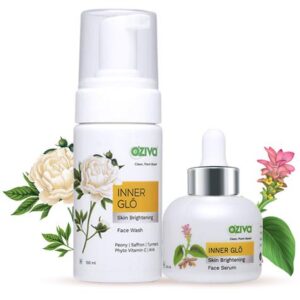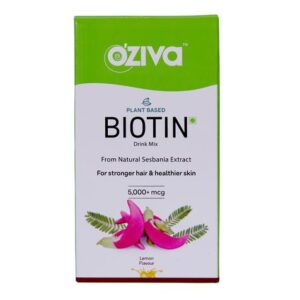Let’s talk about the diet to clear skin! Everyone runs after beauty products to get that glowing and smooth skin, but real beauty starts with nourishment from within. The truth is, what you eat has a huge impact on the overall body, including the skin.
If you’re battling acne and pimples that just don’t seem to go away, you need to watch your diet. There are certain foods that cause pimples, which you should stay away from. There are certain foods to clear skin.
What can you put on your plate for an acne-free complexion? Let’s talk about the diet for clear skin!

What is Acne?
Acne is a prevalent skin problem that can cause bumps to appear on the skin. These bumps can truthfully form anywhere on the body, but they commonly appear on your face, neck, back and shoulders. Acne is often triggered by hormonal changes in your body, so it is very common among children going through puberty. However, it is very possible to have acne into your early 20s and 30s, depending on the hormonal changes in your skin.
What causes Acne?
The skin’s surface is covered in small holes called pores. These pores connect to your sebaceous glands and produce an oily liquid called sebum. Your oil glands send sebum up to the surface of your skin through a thin channel called a follicle. Acne occurs when the skin’s pores clog up with dead skin cells, excess oil, and sometimes bacteria. During puberty, hormones often cause oil glands to produce excess oil, which increases acne risks.
How does your diet affect the skin?

There might be a few sceptical people wondering if there is really is a diet for clear skin or if there are foods to clear acne. It all begins with the overall health of your skin. There are certain foods that raise your blood sugar quicker than others. When blood sugar rises quickly, it causes the body to release insulin-like growth factor 1.
Having excess of this hormone in your blood causes your body to produce more sebum, increasing the risks of acne and inflammation. Some foods that cause pimples in this fashion include pasta, white rice, white bread, and sugar itself. These foods are considered “high-glycemic carbohydrates” and can be termed as foods that cause pimples.
Other researchers have studied the connections between a so-called “Western diet” or “standard American diet” and acne. This kind of diet is based heavily on:
- High-glycemic carbohydrates
- Dairy
- saturated fats
- trans fats
These kinds of foods have been found to stimulate the production of hormones that can cause excess oil to be created and secreted by oil glands.
They’ve also found that a Western diet is linked to greater inflammation, which can also contribute to acne problems.
Deficiencies of certain nutrients can also cause acne if they persist for a very long time. For example, Vitamin A is an essential nutrient for skin health.
What can you put on your plate for an acne-free complexion? What is the diet to clear skin?
Here is the diet to clear skin along with foods that reduce pimples. This diet involves improving the health of your skin overall:
Omega-3 rich diet
Including an Omega 3 plant-based diet can make your skin less prone to acne and blemishes. Omega 3 is anti-inflammatory, so it helps ease breakouts. Stack up on almonds, Brazilian nuts, avocado, flax and chia seeds, almonds and walnuts to soothe your skin.
Some researchers say that Omega-3 reduces the severity of your acne symptoms. While you should include Omega 3 as part of the diet for clear skin, remain aware that its effectiveness for acne is based on the type of Omega-3 consumed as well as the type of acne symptoms.
Food rich in Vitamin C and other antioxidants
Beyond just helping with stubborn acne, a Vitamin C-rich diet also gives the skin better texture and is an essential part of the diet for clear skin. Daily intake of oranges, kiwi, strawberries, watermelon, blueberries, pineapples and apples gives the skin its elasticity, in addition to regenerating other antioxidants in the body.
Vitamin C (Ascorbic Acid) is a skin saviour. It not only boosts cell regeneration but also plays a key role in collagen production. You can check out OZiva Plant Based Collagen Builder, if this is what your requirement is.
Besides Vitamin C, Vitamin E and A are also great sources of antioxidants and help cure acne by reducing oxidative stress. Tomato, Spinach, Green Tea and Broccoli have the highest antioxidants. You can use them to prevent breakouts.
Zinc for acne
Are you consuming a zinc-rich diet in the right proportions? Food rich in zinc like cereals, spinach, mushrooms, legumes, lentils, cashews, yogurt, sesame seeds, and pumpkin seeds are all wonderful sources of zinc.
On a cellular level, zinc addresses the root cause of acne and aids in acne scar removal. Besides, zinc also helps in regulating metabolism and hormone levels. Research declares that zinc might help treat acne by suppressing the production of sebum in the skin and fighting against the acne-causing bacteria that gather on open pores. These positive effects of zinc make it an essential part of the diet for clear skin. Zinc fights against both inflammatory and non-inflammatory acne.
If you do not get enough zinc through your diet, you should try including OZiva Plant Based Bettr.Zinc+ in your diet. It contains 12 mg of plant-derived Zinc along with essential multivitamins, minerals and Ayurvedic herbs for acne control, anti-inflammation and skin repair. It helps relieve the redness and itchiness associated with moderate and severe acne. It also reduces and diminishes the appearance of your acne scars.
Why choose anti-acne foods in the diet to clear skin?
There is a strong connection between your skin health and gut health. Your diet affects hormone regulation, oil production and inflammation, which further leads to acne. Thus, foods rich in antioxidants, probiotics could possibly be effective in curing acne.
Interestingly, fruits, nuts, leafy greens, and healthy fats are all available in your kitchen. And, remember, a healthy diet is great for your skin.
Which foods increase acne?
While you can never brand a group of foods as “acne-triggering foods”, because there is no confirmed research on it, there are definitely connections between those foods and acne and breakouts.
There are certain types of foods that cause pimples and trigger inflammation, which in turn leads to the buildup of severe acne on your skin. Here is the summary of those kinds of foods that cause pimples and acne:
Sugar and milk
Whether it’s the dessert you love or the dairy you can’t resist, its increased consumption has a strong relation with inflammation and blemishes. This is especially true for skimmed milk, curd, mayonnaise, and other processed sugar. Fortunately, yogurt and cheese have no links with acne marks. Dairy products are pro-inflammatory and can aggravate acne, eczema, and rashes.
If you want the diet to clear skin, then definitely reduce the amount of sugar and milk that you take on a daily basis and watch numerous positive things happen in your life.
Refined carbs
If you have constantly been indulging in snacks, cookies, muffins and cakes, it’s time to say a big no. These are highly processed foods that contain added sugar. These foods spike your blood sugar, thereby increasing insulin levels and leading to a breakout.
Soy products, beer and wheat
If you have sensitive skin, you must minimise intake of gluten; else it leads to scaly and bumpy rashes. Wheat bread, soy sauce, and beer shouldn’t be a part of your daily diet. People who consume soy consistently might experience redness, itchiness, and flare-ups that get worse with each passing day.
Takeaway on the Diet to Clear Skin:
Worrying over acne flare-ups isn’t a solution. The next time you find acne, you should take a hard look at your eating habits and see what food you should eliminate and check for any missing nutrients in your anti-acne armour. Begin by taking the diet to clear skin for around 3-6 months for the best results. If you do find some missing, you can restore them with help of OZiva’s wide range of skin nutrition products.
Some options that you can take along with consuming foods to clear skin include OZiva Bettr.Zinc+ and OZiva Bettr.C+.
Last modified: September 5, 2023




